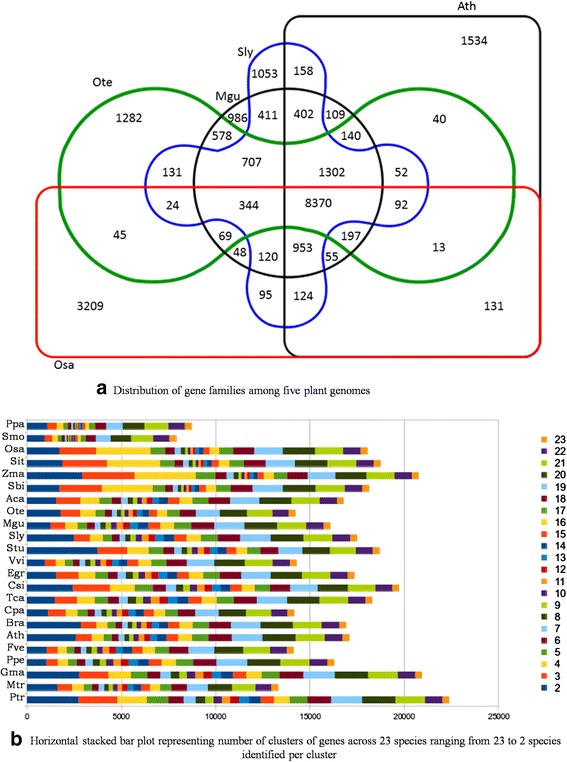Fig. 2.

Distribution and clustering of orthologous genes of Tulsi genome to other related plant genomes. a. Distribution of gene families among five plant genomes. Ocimum tenuiflorum (Ote - green), Arabidopsis thaliana (Ath – black rectangle), Oryza sativa (Osa – red), Solanum lycopersicum (Sly – blue) and Mimulus guttatus (Mgu – black circle). The numbers in the Venn diagram represent shared and unique gene families across these 5 species obtained by OrthoMCL. b. Horizontal stacked bar plot of all the genes in 23 different genomes. This figure shows ortholog group distribution in all 23 plant species including Tulsi. Each row represents a plant species - Physcomitrella patens (Ppa), Selaginella moellendorffii (Smo), Oryza sativa (Osa), Setaria italic (Sit), Zea mays (Zma), Sorghum bicolor (Sbi), Aquilegia caerulea (Aca), Ocimum tenuiflorum (Ote), Mimulus guttatus (Mgu), Solanum lycopersicum (Sly), Solanum tuberosum (Stu), Vitis vinifera (Vvi), Eucalyptus grandis (Egr), Citrus sinensis (Csi), Theobroma cacao (Tca), Carica papaya (Cpa), Brassica rapa (Bra), Arabidopsis thaliana (Ath), Fragaria vesca (Fve), Prunus persica (Ppe), Glycine max (Gma), Medicago truncatula (Mtr), Populus trichocarpa (Ptr). The bar graph represents ortholog protein groups for that species subdivided into 22 categories depending on the degree of sharing with the other 22 plant species e.g., category 2 represents the number of orthologous groups that have representatives from the species of interest and from one more species out of the 23 species selected for the study
